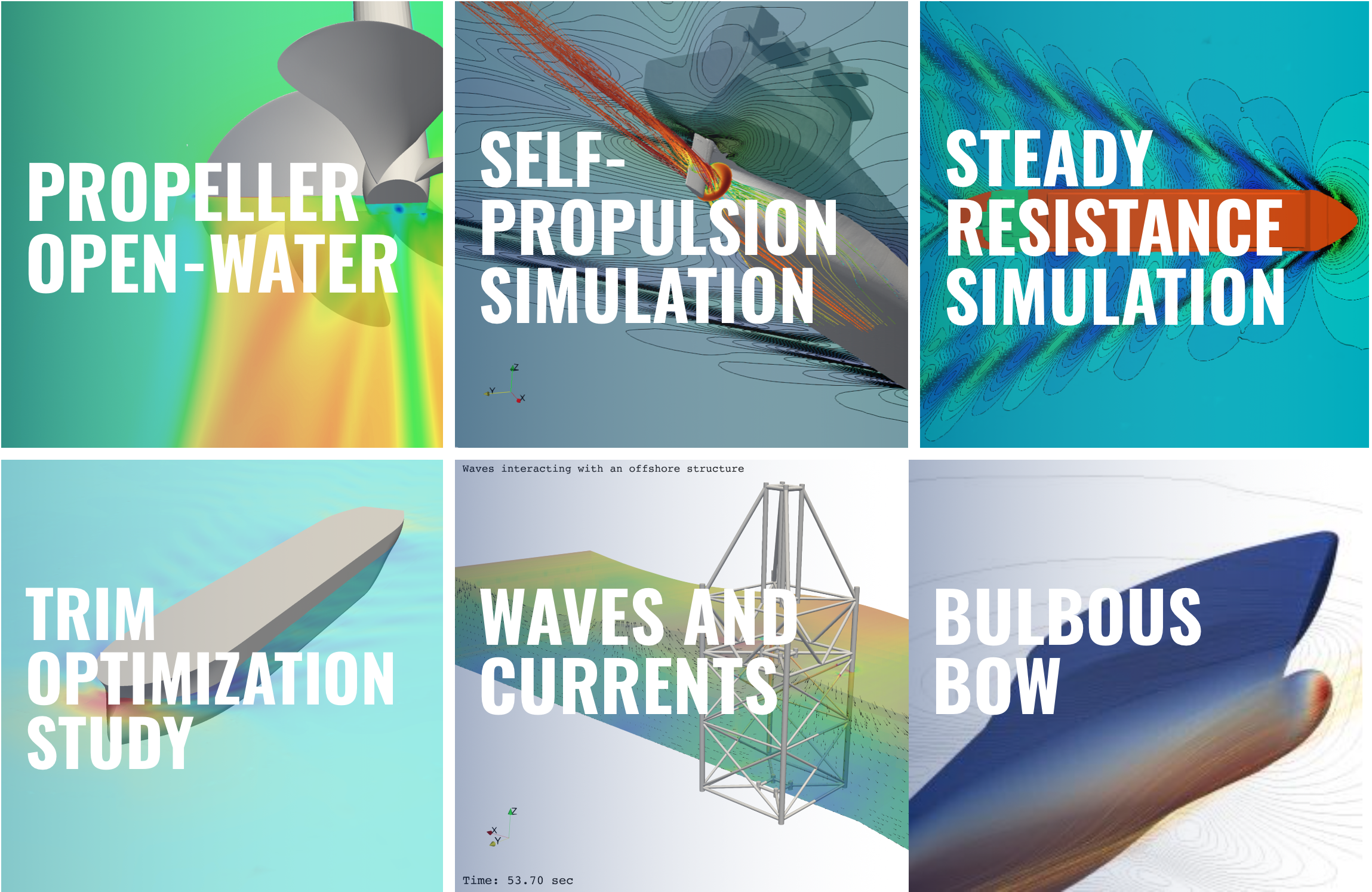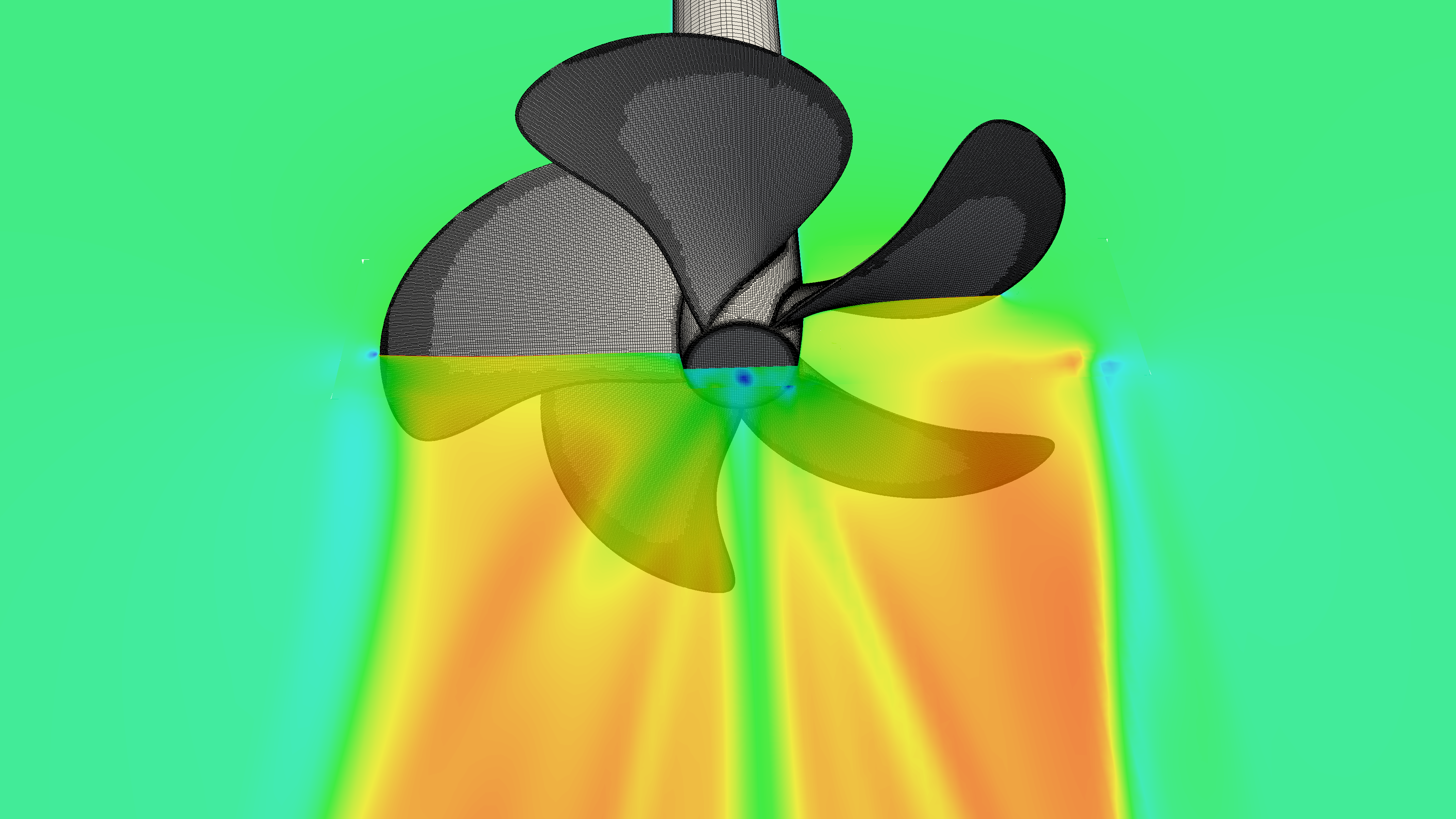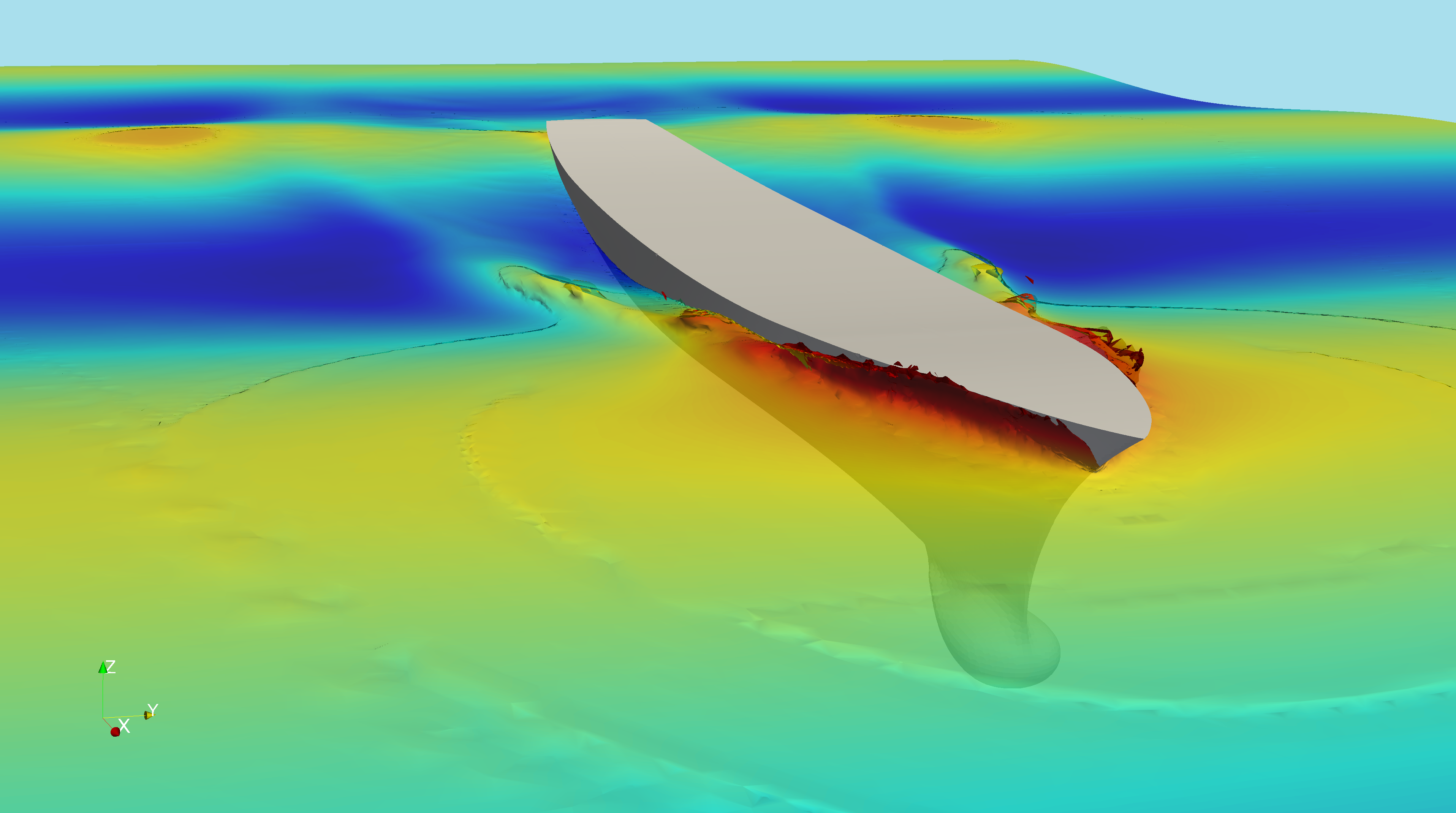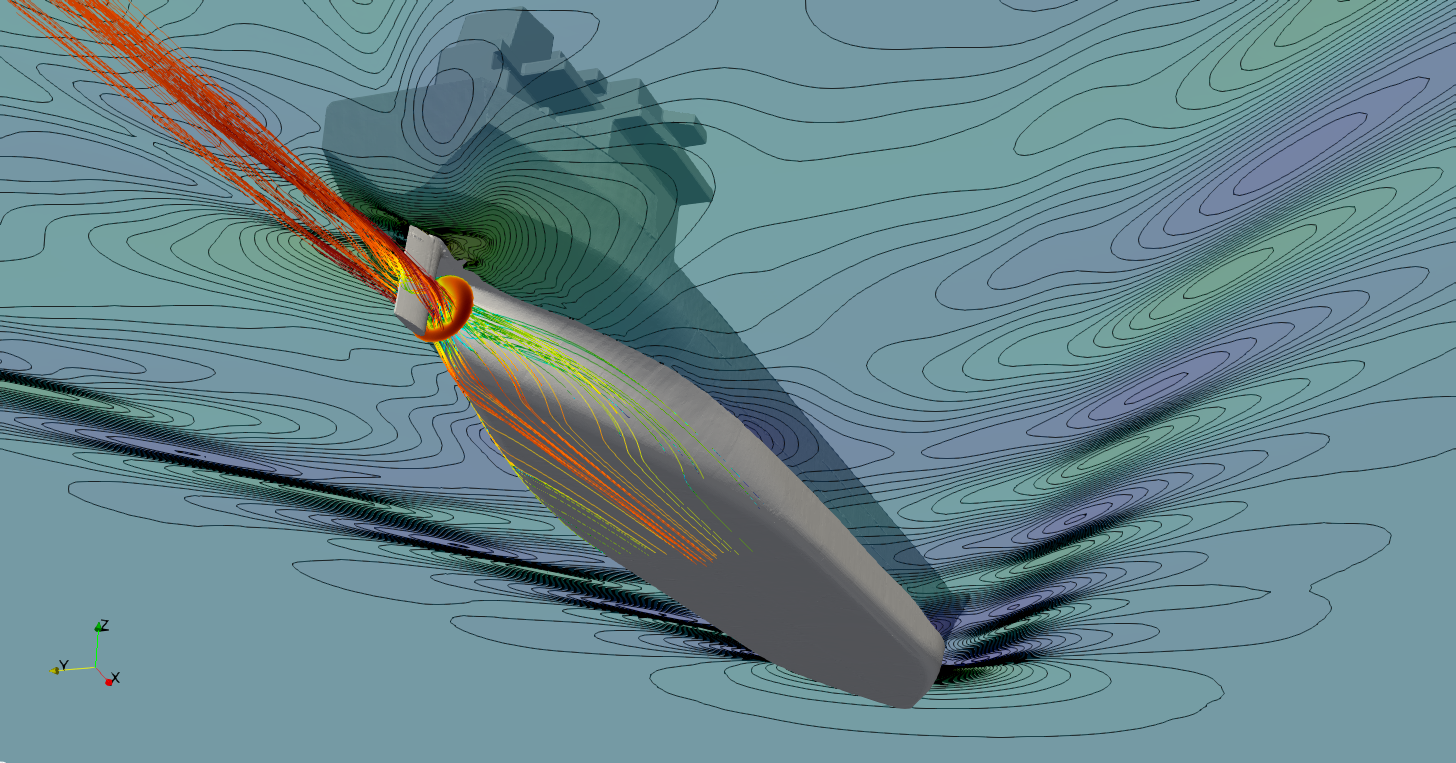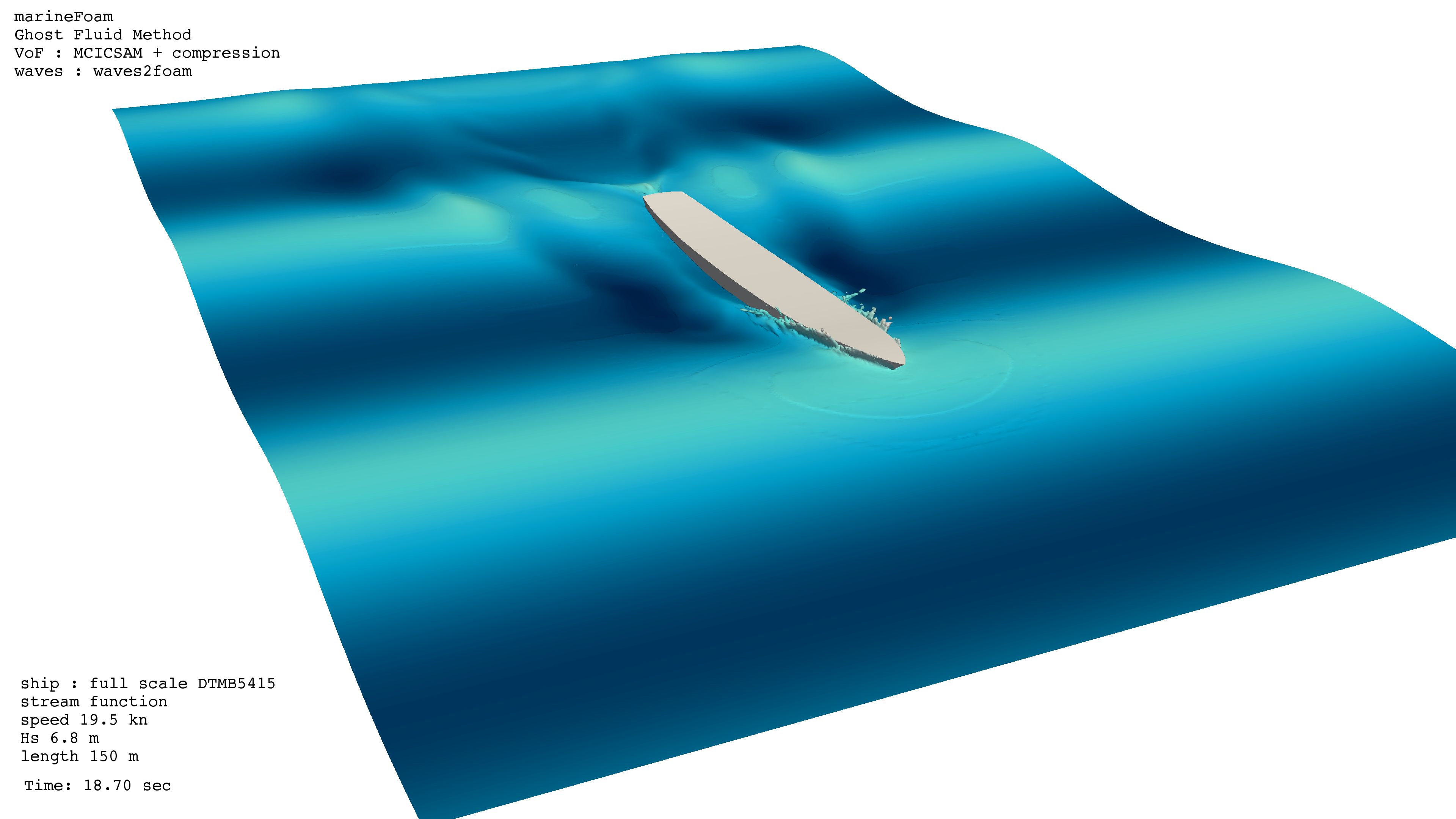Marine and offshore
G-MET Technologies is located in the heart of an industrial fabric rich in maritime and offshore activities. We use our calculation methodologies for solving various marine and offshore problems.
Nowadays CFD is a major tool for shipbuilding and design. The use of CFD for the shipbuilding industry is motivated by environmental considerations in improving the energy efficiency of marine vessels, safety analysis, or pure performance. Due to this context, the current applications in the industrial field like resistance calculation, self-propulsion, trim optimization studies, added resistance in waves, or bulbous bow design require intensive CPU resources and accurate simulation results.
At G-MET Technologies we mainly use OpenFOAM for our simulations in the marine and offshore industry. Because we want to propose the best solution for our client we have developed and qualified, an in-house solver dedicated to incompressible two-phase flow and called marineFoam
In addition, we also offer structural sizing studies, in particular for metallic equipment boarded on ships.
